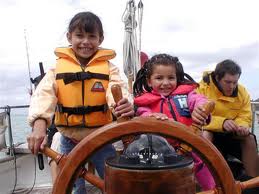How to Operate a Boat: Shifting, Steering and Stopping
 Before you push away from the dock and open up the throttle, be sure you have reserve gasoline and outboard motor oil on your vessel. If you’re operating an outboard motor, the throttle arm will also act as a tiller. Remember, the boat will go in the opposite direction that you point the tiller. You should be able to get the hang of it rather quickly when you’re going forward, but be sure to exercise extra caution if and when you have to back up. Once the throttle arm is turned to “run” or “shift,” adjust the shift lever and turn the throttle handle until you reach your desired speed.
Before you push away from the dock and open up the throttle, be sure you have reserve gasoline and outboard motor oil on your vessel. If you’re operating an outboard motor, the throttle arm will also act as a tiller. Remember, the boat will go in the opposite direction that you point the tiller. You should be able to get the hang of it rather quickly when you’re going forward, but be sure to exercise extra caution if and when you have to back up. Once the throttle arm is turned to “run” or “shift,” adjust the shift lever and turn the throttle handle until you reach your desired speed.
Unlike your car, a boat doesn’t have brakes. The only way to reduce your speed is by lowering the power, which is actually quite effective due to the immense resistance from the water. And don’t try to stop on a dime. Shift the engine down to neutral well before your stopping point. If need be, you can give it a little more juice to get your all the way there.


Comments